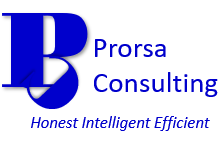EHS Management System Act Stage Info to Seal the Deal
By : Admin -

The Act Stage of the Plan-Do-Check-Act (PDCA) cycle provides an opportunity to make corrections and improve. As such, it serves as a key component of any Environmental, Health, and Safety (EHS) Management System.
As with all the other PDCA cycle stages, the EHS Management System Act Stage works in concert with all the previous system efforts. Yet, this particular stage completes the cycle by identifying additional items to launch again into the Plan Stage, thus restarting the cycle.
So, let’s take a deeper look into the EHS Management System Act Stage in this final post within our management system series.
Did you miss any of the previous posts in this series? If so, you easily visit them via the following links:
Start Negotiating for EHS Management Systems Like the Pro You Are
Think You Know How to Execute an Effective EHS Management System Implementation Plan Stage?
Info on the EHS Management System Do Stage You Can’t Ignore
The Subtle Art of an EHS Management System Check Stage
Note: ISO 14001:2015 (Environmental Management) has been utilized as a guide for the listed check stage activities. Nevertheless, the ISO 45001:2018 framework addressing Occupational Health and Safety Management largely aligns with the elements discussed here.
Disclaimer: Please be aware that this blog post may contain affiliate links and any purchases made through such links will result in a small commission for Prorsa Consulting (at no extra cost for you). Feel free to visit our Disclosure of Material Connection page for more information.
EHS Management System Act Stage: Developing and implementing corrective and preventative actions
Take a moment to remember all monitoring, measuring, auditing and reviewing you did during the Check Stage. As you moved through these activities, you were sure to find a few items in need of correcting.
Even if you did not identify items for correction, surely some of the data indicated a potential issue that could be prevented. How an organization responds to items needing correction and potential issues defines its corrective and preventative action process. This process has a central role in the EHS Management System Act Stage.
Nonconformity and Corrective Action
While performing your management system’s internal audit, you should have flagged any items that did not meet the system reference standard. Each of these items represents a nonconformity. Corrective actions fix these nonconformities.
Corrective action does not only apply to the results of an internal audit. Incident investigations, management review results, monitoring & measurement activities, and compliance audits can also indicate the need for corrective action.
Depending on the issue requiring resolution, a corrective action may be quick or need some time to execute. The situation may require revisiting the Plan, Do, or Act Stages to fully implement a suitable solution.
Observations and Preventative Action
Internal auditors usually also identify some items as observations. These particular elements do not meet the definition of nonconformities, but they may turn into nonconformities in the future if left unaddressed.
Enter the preventative action. These actions stop an undesired event from occurring or reoccurring. As with corrective actions, preventative actions can flow from other sources than just internal auditing.
Some flexibility exists around the choice to implement preventative actions. However, a management system without a healthy amount of strategic prevention misses numerous opportunities to improve its EHS performance.
The Anatomy of a Corrective & Preventative Action Process
The ISO standards mandate an improvement action process for every management system. The corrective and preventative action process requires documentation, including the tracking of improvement actions.
So, what makes a corrective and preventative action process good? Ultimately, the organization should decide on a process that best fits its needs. However, when considering this particular process, companies should consider at least the following items for inclusion:
- Opportunities for employee engagement and feedback.
- An indication of how nonconformities will be identified (i.e. internal audits, compliance evaluations, monitoring/measurement activities, etc.).
- Commitment to perform incident investigations with a goal of determining root causes and preventing reoccurrence.
- Conducting needs assessments for actions to prevent/avoid nonconformities before they occur.
- Doing risk assessments before implementation of improvement actions to identify any additional or changed hazards needing mitigation.
- Tracking nonconformities and the improvement actions taken to mitigate occurrences or reoccurrences.
- Communicating the results of improvement actions.
- Examining corrective and preventative actions for effectiveness after implementation.
 ISO 14001:2015 Management Overview – $187.00 This course is specifically designed for people who want to gain knowledge about Environmental Management Systems. Upon successful completion of this course, delegates will gain knowledge and understanding of ISO 14001:2015 which is based on Annex SL. |
EHS Management System Act Stage: Putting added processes in place to drive continuous improvement of the overall management system
You deny one of your management system’s key purposes if you do not allow for continuous improvement. Remember, organizations often begin a management system endeavor with the end goal of improving results.
Formulating a path to continuous improvement during the EHS Management System Act Stage helps to ensure improvements don’t just happen randomly by accident. Moreover, organizations secure the ongoing health and stability of the management system with engagement in this Act Stage activity.
Identifying Improvement Opportunities
One of the keys to this EHS Management Stage activity is identifying improvement opportunities as they present themselves. As such, organizations should work to devise ways to collect and track continuous improvement suggestions, so they do not get overlooked later.
To make continuous improvement seamless, you should look at integrating improvement collection pieces into the system’s processes. For instance, top management could identify some improvements goals each year during management review.
Facilities may find continuous improvement opportunities during routine inspections performed as part of a monitoring process. Continuous improvement could even start with a simple suggestion from an employee while engaging in worker communication and consultation.
Improvement Action Implementation
Nevertheless, collecting suggestions will only get you halfway there. Companies must actively implement continuous improvements in order to reap the benefits.
Continuous improvement can take many forms throughout a system. It may consist of an upgrade to a process. Additionally, it could present itself as an expansion of a particular program or better performance against a specific target.
Companies should strive for ongoing enhancement of the management system over time. With continuous improvement, the one and done mentality does not get the job done. As such, organizations must consistently seek advancement opportunities and regularly implement progressive actions that will positively impact EHS performance.
Save Up to $90 on OSHACampus.com Courses!
Final Thoughts
The EHS Management System Act Stage brings the PDCA cycle full circle. It allows for correction and prevention of issues within the system. In addition, it provides the vehicle for continuous improvement throughout the system.
Act Stage activities naturally lead back to the Plan, Do, and Check Stages of the PDCA cycle, promoting the continual renewal of the process.
Prorsa Consulting can assist with your environmental, health, & safety compliance needs. Check out the Services page for more information. Contact us via contact@prorsaconsulting.com with any questions about our services.
We encourage your feedback on this blog’s content. If you found this information useful, be sure to like and/or share below. You can also give us your feedback via our Contact Us page.
Don’t forget to follow Prorsa Consulting on Google+, LinkedIn, Pinterest, and Twitter.
Get helpful materials for use in your EHS program on our Free Resources page. Just subscribe to the Prorsa Consulting Newsletter below to receive access.

